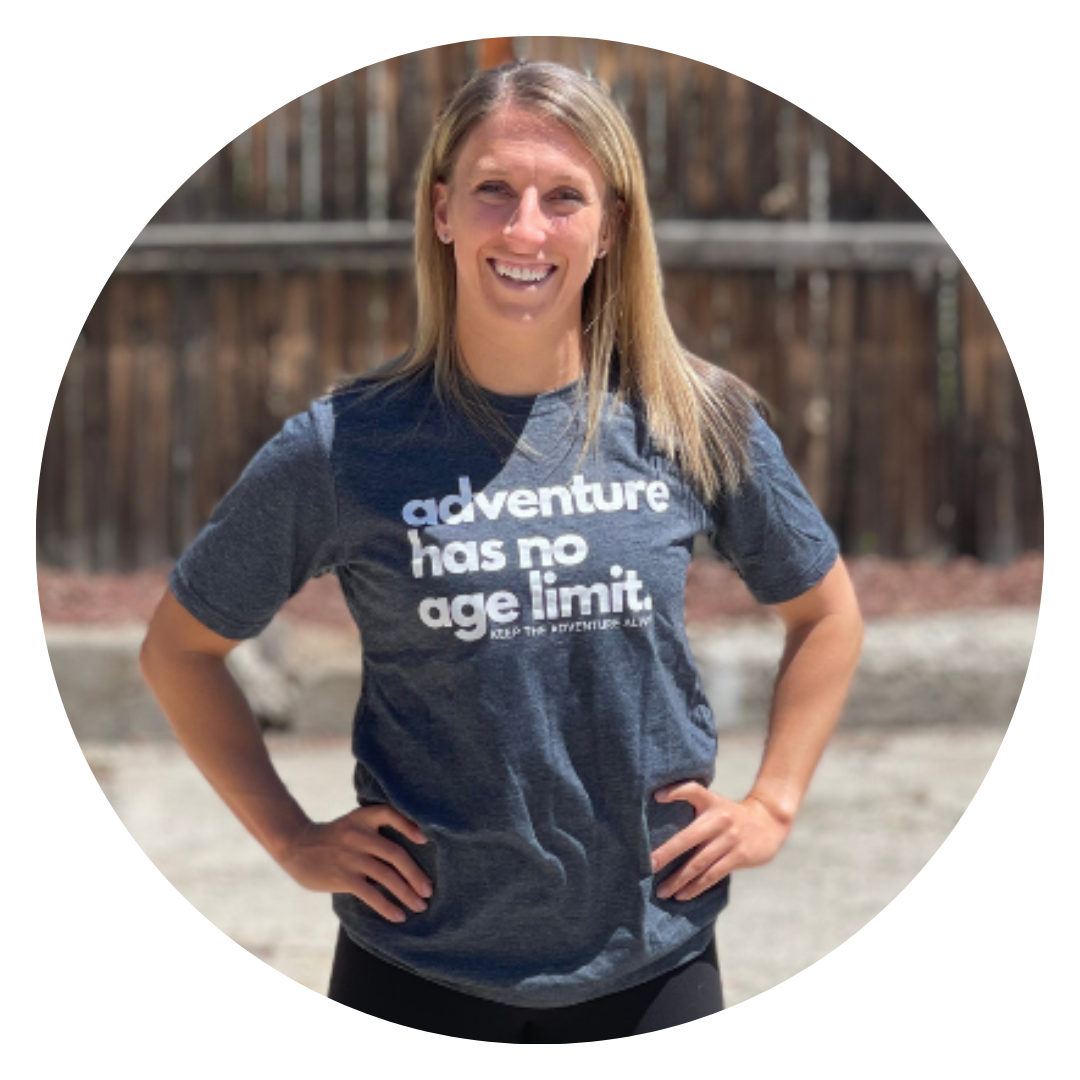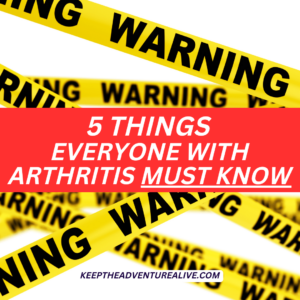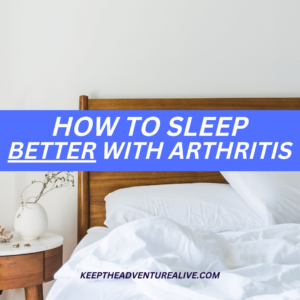One of the best exercises to help you actually find arthritis pain relief is a kettlebell deadlift. As a physical therapist and osteoarthritis specialist who has worked with hundreds of people with osteoarthritis- this exercise can be an incredibly powerful one to master. This is because it helps to challenge muscles that are vital to support joints like the hip, knee, and back.
This article may contain affiliate links that provide us with a small commission from purchases made from the links with no extra cost to you.
What is a kettlebell?
A kettlebell is a type of weight that resembles a small cannonball with a handle on top. It is typically made of cast iron and comes in a range of weights.
They can be found at sporting good stores, online, and in most gyms.
They differ from dumbbells in both the shape and the weight distribution.
One of my favorite aspects of a kettlebell is the versatility of it. There are a plethora of different movements you can do with a kettlebell. Most kettlebell movements challenge many different muscles at once which gives you a better bang for your buck in workouts too.
From a physical therapy perspective, kettlebells can be a great addition to an exercise routine because they allow for a wide range of movements that can target multiple muscle groups. For example, the popular kettlebell swing can work the legs, core, and shoulders, while a type of kettlebell squat called the goblet squat targets the legs and core.
What is a kettlebell deadlift?

A deadlift is a movement that is commonly used to pick something up from the floor, particularly a heavier object.
Many people are led to believe that bending over is bad for the body, especially the spine. It’s actually a very vital movement but needs to be done correctly to prevent pain.
The deadlift is an important movement everyone should master, arguably even more important with arthritis.
Think about these questions below:
- Do you dread bending over to pick an object up from the floor?
- Do you anticipate or expect pain every time you have to bend over?
- Do you avoid bending over all together?
If you answered yes to any of these questions, I’m really glad you came across this page. The kettlebell deadlift will be very beneficial to you.
Here is a video below on how to complete the full movement. But don’t worry, this is the final movement so there are absolutely movements you can practice to work up to it.
When first learning how to complete the kettlebell deadlift, it is imperative you learn how to do something called a hip hinge.
A hip hinge is when you bend your hips back towards your heels while keeping your chest up. During this movement you should feel a stretch in the back of your legs. Then, you will use your glutes (butt muscles) to help you stand back up.
Here is an example below on how to practice the hip hinge. You must master the hip hinge before moving on to the deadlift, especially with weight for the kettlebell deadlift.
Why does this exercise help arthritis pain?
Reason #1
The kettlebell deadlift is vital to help build the muscles in the backs of your legs. If you think about it, the muscles in the fronts of your legs often get worked when walking and moving about your day.
The muscles in the backs of your legs get worked when you climb stairs, walk backwards, squat down and up, and when you complete exercises like deadlifts.
The muscles in the backs of your legs help to support the ankle, knee, hip, and spine. If you have arthritis in any of those areas and don’t complete any of the above movements regularly, your joints may not have the support they truly need.
Reason #2
Secondly, mastering the kettlebell deadlift allows you to actually build muscle. Piggybacking off the first point- your body is likely used to your normal activity throughout the day. Meaning, it is likely used to the couple times you may go up and down the stairs a day if you have stairs in your home.
In order to continue to build muscle and promote joint support, you have to continue to progress an exercise. Adding weight is one way to make an exercise more difficult and to challenge the muscles enough to break down and repair in a stronger fashion.
If your muscles aren’t challenged enough to lead to the break down, you likely aren’t building muscle to the extent that you may think.
Starting off with a 5 or 10lb kettlebell can be a great place to start, once you master the hip hinge and feel confident with the movement. I like to measure confidence as being able to complete at least 10-12 repetitions without pain and moving in a way that you don’t have to watch yourself in the mirror to make sure you’re doing it correctly.
You also want to make sure you don’t have any significant pain and/or stiffness after completing at least 10 repetitions on 3 separate occasions before adding weight.
Reason #3
Thirdly, mastering the kettlebell deadlift can make movement less scary. Once you are able to feel confident with movements such as bending over and picking something up- it can open the doors to so many other activities.
Especially if you have difficulty up and down the stairs, up and down hills, and/or maintaining your balance- mastering this deadlift can make these activities easier.
What if you didn’t have to hesitate or second guess picking something up from the ground. What if you could bend down and pick up your grandchild from the floor without thinking twice about it? What if you could pick up the laundry basket from the floor without having to spend 10-15 seconds getting into a weird position in order to avoid pain?
It is possible!
Take some time and master this movement. This can be the start of your arthritis adventure.
The Best Way To Begin
Kettlebells can help to significantly reduce osteoarthritis pain when used in the correct way. But, you may be wondering what is the best way to get started?
I have a youtube channel full of videos to help you learn how to move in ways that make your joints feel good.
This is a great beginner workout to introduce your body to kettlebells and learn arthritis friendly movements such as the kettlebell deadlift.
It is part of a 3 part series that continues to progress in difficulty as you master the movements.
Getting strong with osteoarthritis
Muscle strength is one of the best ways to support an arthritic joint.
I know when you’re in pain, movement can seem daunting. You may feel scared to try new movements, especially with weights.
You may have even been told to avoid exercise (which is very unfortunate people are still being told this).
Movement can make your arthritic joints feel incredible- if the right movements are presented. Gone are the days of believing “no pain, no gain”.
Instead, listening to your body and your body’s response to exercise is crucial. Continuing to overdo it can lead you a vicious cycle of flare ups and increased pain.
The kettlebell deadlift is one option to help you find arthritis pain relief but it isn’t the only way. If this movement does not feel good to you right now- it’s OKAY! It is possible to work up to it.
Following these guidelines above, you can start building strength and be on your way to joint pain relief!
If you’re ready to get started on your journey, try the free kettlebell series below!

Alyssa Kuhn
Dr. Alyssa Kuhn is a physical therapist and an osteoarthritis specialist. She is based in Sandy, Utah and loves playing in the mountains. She founded Keep the Adventure Alive to break through the doom and gloom of osteoarthritis and bring a motivating perspective with the possibility of adventure. She helps people all across the world find pain relief, regain confidence and lead very active lives. She has helped hundreds of people find their own arthritis adventures and now, it’s your turn!
Disclaimer: This post is for general informational purposes only. It should not be used to self-diagnose and it is not a substitute for a medical exam, cure, treatment, diagnosis, and prescription or recommendation. It does not create a doctor-patient relationship between Dr. Kuhn and you. You should not make any change in your health regimen or diet before first consulting a physician and obtaining a medical exam, diagnosis, and recommendation. Move Well Age Well, LLC and Dr. Alyssa Kuhn, PT, DPT are not liable or responsible for any advice, course of treatment, diagnosis or any conclusions drawn, services or product you obtain through this post, video or site. Complete all exercises at your own risk.

If you are looking to regain your active life but are unsure where to start, join the revolutionary membership, Adventurers for Life. This is a step-by-step path that not only will help you find pain relief but will help you unlock adventure. You’ll get workouts, tests to pass to make sure you are on the right track, community events and MORE.




